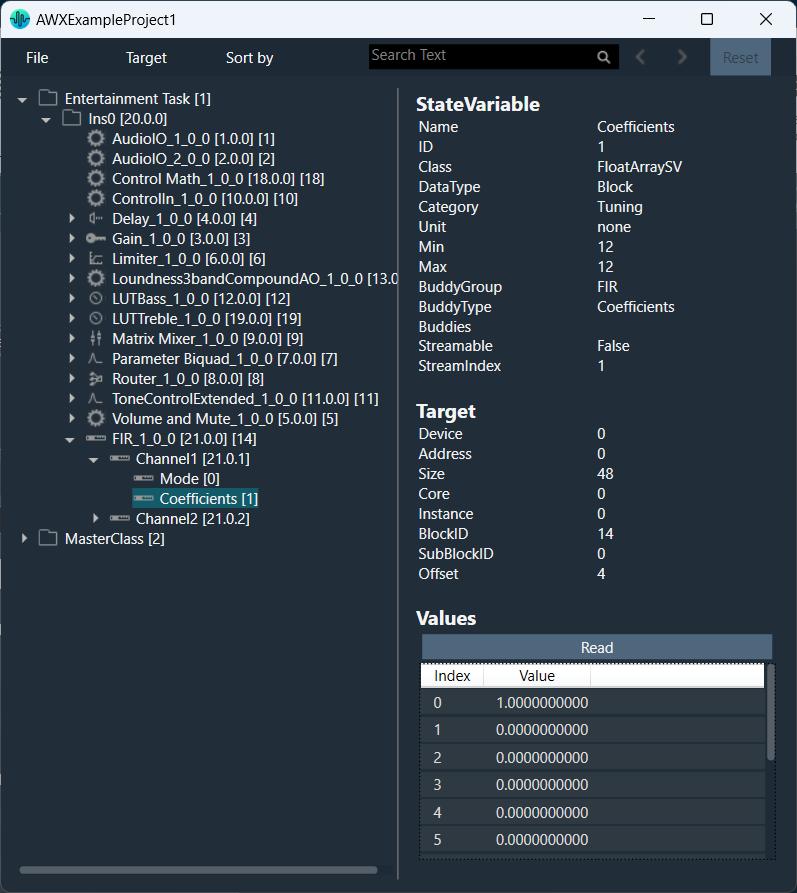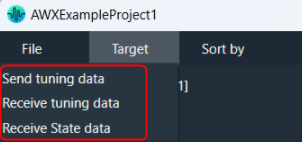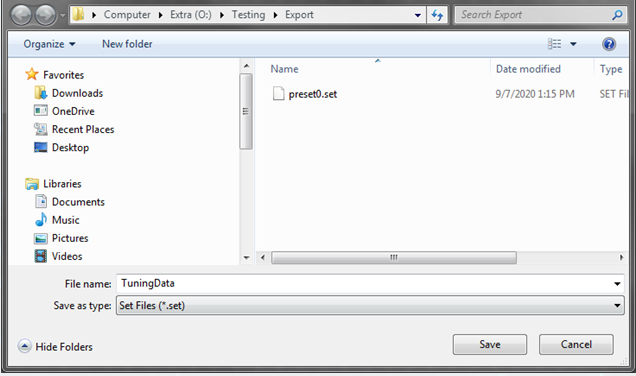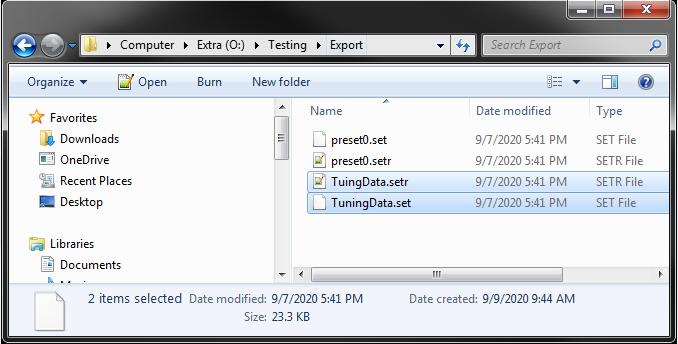The State Variable Explorer window allows you to view the memory layout of each device instance. It can also be used to send and receive tuning data.

To copy values of FloatArraySV type state variable to the Windows clipboard, press CTRL+ C in the table . The float values are located in the clipboard. The same can be achieved by using the context menu (Copy All) of the table.

| Properties | Descriptions |
| File | Using the file options you can load and save the set file.
|
| Target | Using target options you can send or receive tuning data from the connected device. When the device is connected you will get the following options.
|
| Sort by | Using sort options you can sort the state variables and audio objects in the state variable explorer.
When you click it the first time, it will sort in ascending order; the next time, it will sort in descending order, and so on. |
| Search | Using the search option, you can locate and highlight a matching record and move on to the next or previous matching data set. It will search audio objects and state variables based on Name, Block Id and HiQnet Id.  |
| Reset | The Reset option will clear all search and sort data and reset state variable explorer to default state. |
Saving Set File from State Variables Explorer
- Navigate to the Device Designer tab and select the device from which you would like to select and store the set file.
- Click on State Variables. This opens the State Variables window.

- On the State Variable window, select from File and click Save Set As.

A dialog box will appear, where you can choose the folder to store the files (.set/.setr). Enter a file name and click on the Save button.

Once you have saved the set file, both the .set and .setr files will be accessible in the folder you selected.

If the set file is generated using a different panel, such as the IESS panel, the .setr file will not be generated by default. However, you can utilize any of the methods mentioned earlier to generate the .setr file if needed.

